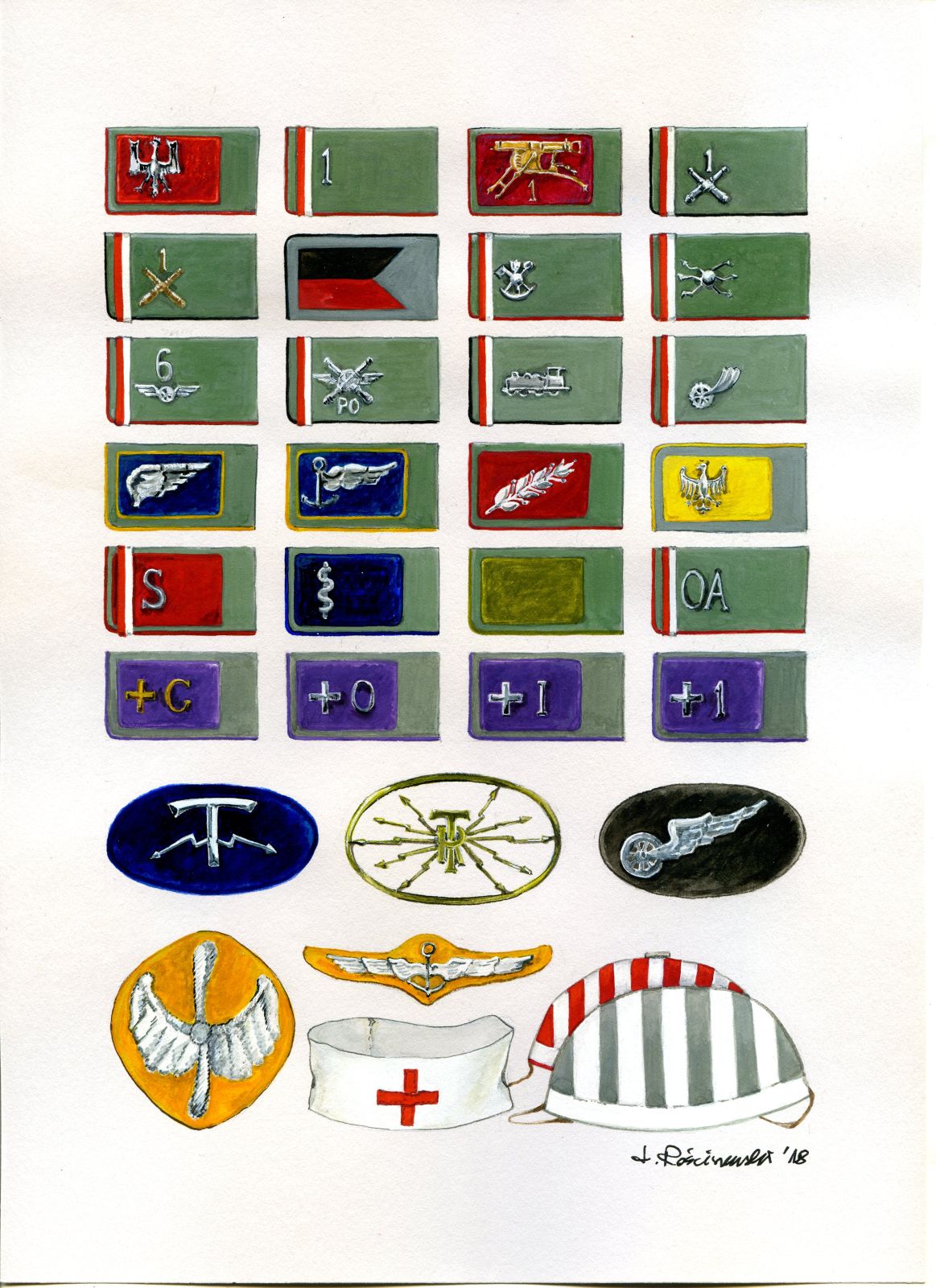III. Models of insignia according to the type of military forces, weapons and services
1. Insignia worn on gorget patches, directly on the jacket and “uhlan” jacket collars, introduced by Central Command’s orders: 1.1. Generals, officers and privates of Central Command Headquarters, 1.2. infantry (here: the 1st Regiment), 1.3. HMG reserve unit and HMG sharpshooters battalion, 1.4. field artillery (here: the 1st Regiment), 1.5. heavy artillery (here: the 1st Regiment), 1.6. Horse Artillery Squadron, 1.7. sappers, 1.8. radio-telegraphers, 1.9. railway forces (here: the 6th Regiment), 1.10. armoured trains, 1.11. drivers, 1.12. automobile troops, 1.13. officers and mobile staff of air forces, 1.14. balloon troops - graduates from aeronautical school, 1.15. Officers School in Poznań, 1.16. Field Gendarmerie Squadron at the Central Command, 1.17. Judiciary Corps officers, 1.18. doctors, 1.19. veterinarians, 1.20. administration officers, 1.21. general dean, 1.22. regional dean, 1.23. division priest, 1.24. regiment chaplain.
2. Other insignia (worn on left jacket sleeve): 2.1. telegrapher, 2.2. radiotelegrapher (without textile pad), 2.3. railway troops, 2.4. air forces (September 1919), 2.5. balloon troops – those who did not graduate from aeronautical school (in accordance with Central Command’s orders of 28 May and 3 June 1919), 2.6. stretcher-bearer’s and paramedic’s band, 2.7. orchestra members’ insignia: infantry (1920 – 1921) and the 1st Regiment of Greater Poland Uhlans (Poznań-Ławica, May 1919).
[1] commonly known as “clubs”
